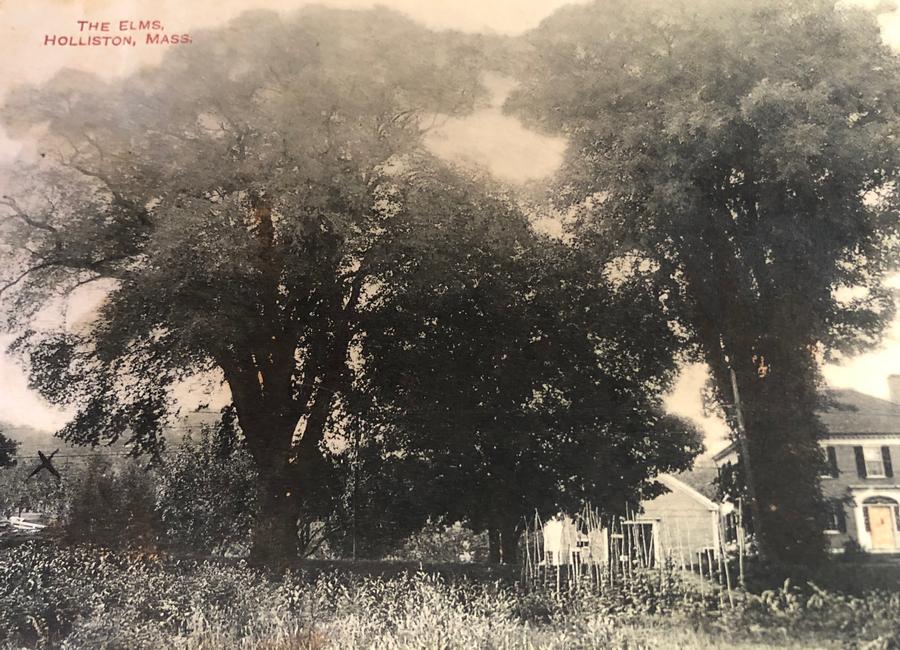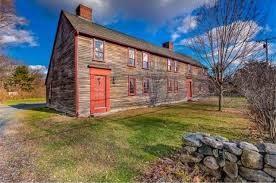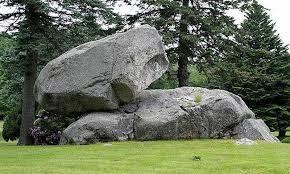Along An Indifferent Road
"Friday, November 6, 1789. A little after seven o’clock, under great appearance of rain or snow, we left Watertown, and passing through Needham (five miles therefrom) breakfasted at Sherburn, which is 14 miles from the former. Then passing through Holliston, five miles, Milford, six more, Mendon four more, and Uxbridge six more, we lodged at one Taft’s, one mile further; the whole distance of this day’s travel being 36 miles. From Watertown, till you get near Needham, the road is very level – about Needham it is hilly – then level again, and the whole pleasant and well cultivated, till you pass Sherburn; between this and Holliston is some hilly and rocky ground, as there is in places onwards to Uxbridge; some of which are very bad. Upon the whole it may be called an indifferent road – diversified by good and bad land – cultivated and in woods – some high and barren, and others low, wet and piney. Grass and Indian Corn is the chief produce of the farms. Rye composes a part of the culture of them, but wheat is not grown on account of the blight. The roads in every part of this State are amazingly crooked, to suit the convenience of every man’s fields; and the directions ignorant; for instead of going to Watertown from Lexington, if we had proceeded to Waltham, we should in thirteen miles have saved at least six; the distance the road from Watertown to Sherburn going within less than two miles of the latter (Waltham). The clouds of the morning vanished before the meridian sun, and the afternoon was bright and pleasant. The house in Uxbridge had a good external appearance, (for a tavern) but the owner of it being from home, and the wife sick, we could not gain admittance; which was the reason of my coming on to Taft’s; where, though the people were obliging, the entertainment was not very inviting."
From the George Washington Diaries, Vol. IV, 1748 – 1799
And thus was the report and description by George Washington as he passed through these parts. Author Nathaniel Philbrick, writer of many popular books on American history, is currently retracing Washington’s journey from Boston to New York in 1789, and he is making many stops along Washington’s trail. He made a visit recently to Holliston to gather any history and lore we have to offer to the story.
What we do have in Holliston’s archives are the stories of the Washington Elms, trees that honored him because he purportedly stopped by them and marveled at their beauty. Those trees once stood where the police station is now located and now where another tree of notoriety – the Moon Tree – occupies the same spot. The elms were planted by Aaron Phipps in 1747 as a tribute to his daughters. The trees were 42 years old when Washington passed by, so were probably not as majestic as they later became.

Then Washington and his entourage traveled on to Littlefield Tavern where he stopped and received a welcome quaff of – was it rum? Ale? Just Holliston water from the nearby brook? Who knows for sure. It was rumored that the tavern keeper was apparently prone to watering down the rum to stretch out the supply. We would hope he did not do that for the illustrious guest that day. And then George and his entourage moved along.

Washington and his traveling entourage could not have missed Holliston’s most admired boulder – the Balancing Rock – as they made their way toward Milford and Uxbridge, and that landmark would have provided a good excuse for another one of his innumerable rest stops. One story passed along from those times relates that Washington saw the impressive boulder, climbed up upon the base rock and made a valiant attempt to push the balanced stone from its precarious perch. The stone remains in its rightful place.

And now, a question for all Hollistonians, especially with a Townie inclination: where did you hear about Washington and his encounter with the balancing rock? As yet, we have not found any historical confirmation of the event. George did not confess to his inability to dislodge it. So far, the people I have asked, remembered the story, but are not so sure how or when they did. Therefore, I am asking – if you know the story, do you recall how you heard about it? This is one of our town’s great oral histories, of which we have quite a few, but it would certainly help us out at the Historical Society, and we hope, let Mr. Philbrick know something more about the tradition as well. I invite you to offer your feedback.
Joanne Hulbert; Holliston Historical Society; Holliston Town Historian
very interesting history lesson. Thank you!
Jean Morrissey | 2019-02-19 13:18:57